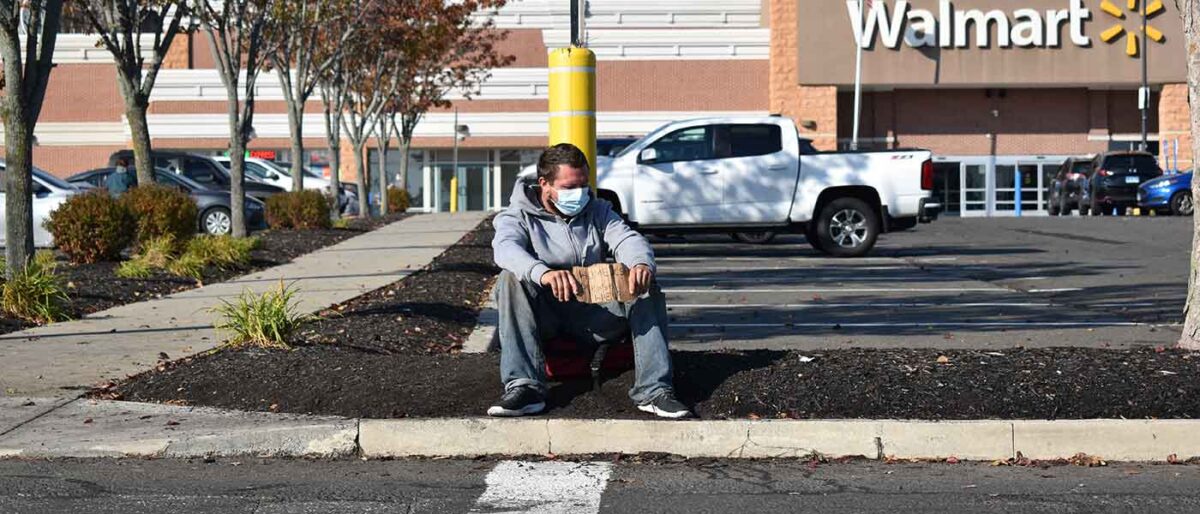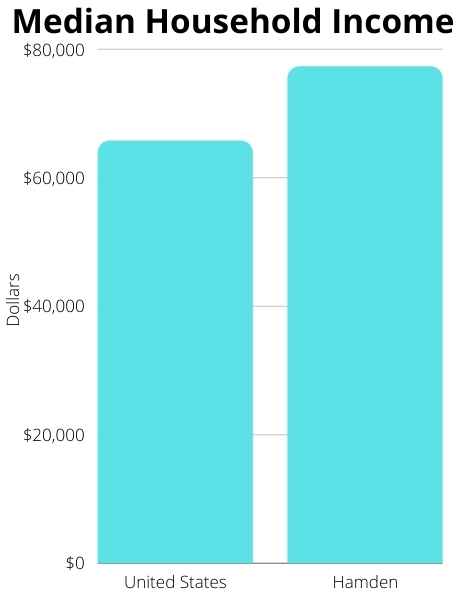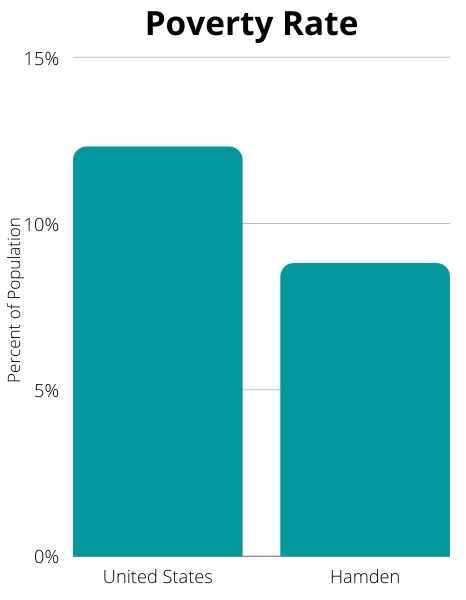Frank Tompkins sits on his red backpack in the mulch of a concrete divider in Hamden Mart, between Walmart and Dixwell Avenue.
He’s panhandling, and has been holding a ripped piece of cardboard that says “HOMELESS Please HELP” in black marker since 8 a.m.
Tompkins, 31, born in Orlando, Florida, has been panhandling since 2018 in Hamden. He said he has been homeless since he was 7 years old.
He said he panhandles every day. He’ll take shifts with his girlfriend holding a sign as cars pass.
“Everybody passes me every day,” Tompkins said. “I can sit out there for hours and not make 20 bucks.”
Tompkins said he’s trying to save to rent a motel room at the Three Judges Motor Lodge in New Haven for a night for himself and his girlfriend.
“So I’ve been out here struggling, trying to fly my sign, to get the money, to get in a hotel and be able to sleep tonight and take a shower,” Tompkins said.
He hasn’t showered in three weeks. He doesn’t have a winter coat. His worn,stained jeans and stretched gray zipper hoodie are from the donation drop boxes in the Hamden Mart parking lot.
When the weather gets colder, he layers clothing from the donation drop boxes to stay as warm as he can. At night, he sleeps in a tent with those same clothes, and with blankets and sleeping bags if he can find them. Surviving the cold gets increasingly difficult in cold winter temperatures and snow.
“Even with a lot of blankets on, you’re freezing out there,” Tompkins said. “Ain’t no helping it. It’s snow right near your tent. And it’s underneath your tent. Sometimes the snow goes around your tent.”
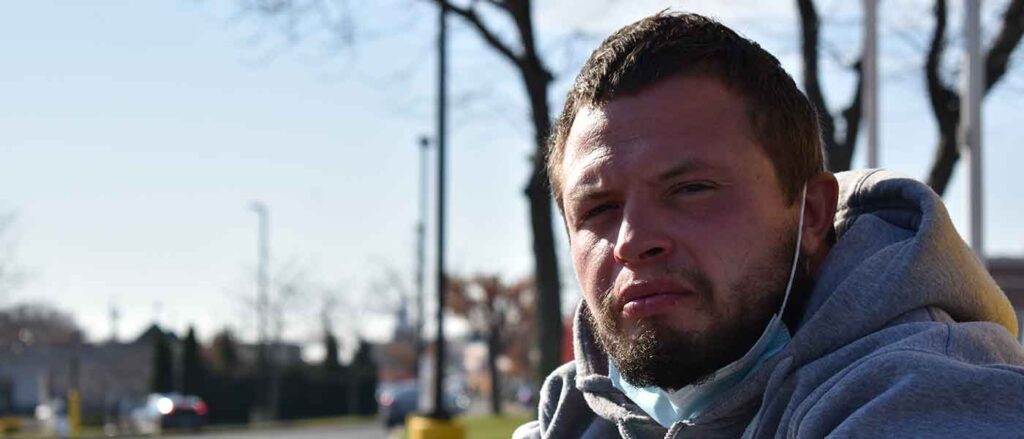
Tompkins and his girlfriend belong to a struggling community of people who are homeless in Hamden. But it’s not just a community, he said.
“Pretty much all homeless people, they understand each other and they just combine together and become family because we have nobody,” Tompkins said. “So we all become our family.”
A struggle to get help
Tompkins is right. People who are homeless often have no one to help them and no safety net in the communities they belong to. Connecticut does not have county-level governments, so the onus to provide homeless services falls on individual towns. And the United States Census Bureau has historically undercounted and underrepresented homelessness.
The census paints Hamden as a solid middle-class town. The folks who live on the streets of the town experience life differently.
Justin Farmer, who represents the fifth district in Hamden’s town council, said offering homeless services in the town is complicated
“In Hamden, we don’t provide services to individuals that are not Hamden residents, for the most part,” he said. “And if you are homeless, how do you prove that you live in town?”
Farmer said that Hamden has offered a warming shelter at 481 Shelton Ave. in the winter since 2018, but it’s not enough. In its first year, the shelter had 10 cots.
“This past year, we did 25 spaces,” Farmer said. “Some nights, you had lines of 64 people waiting for 25 spaces.”
But a warming shelter is not permanent housing.
A lack of services makes it nearly impossible for homeless individuals to get a leg up.
Homeless people who lack a permanent mailing address, references or who appear unhygienic often experience difficulties in a job search. Not all homeless people have a form of identification, a document required by many employers.
Disabilities can form a barrier to employment for homeless people, as well. Tompkins had a head injury years ago. He struggles with his memory, and can’t remember exactly when he was injured. But it affects his daily life. He has been unable to find a job.
“So whatever job I get, I’m not gonna comprehend because I can’t read, I can’t write,” he said. “So it’s kind of hard for me to get a job, doing applications if I can’t read or write.”
Tompkins’ “HOMELESS Please HELP” sign was an extra given to him by a friend who is also homeless.
Sometimes, it’s hard to get help. With no job, income, and limited access to homeless services, Tompkins can’t secure housing or buy himself basic necessities, can’t present himself in a way that society deems appropriate and can’t escape the vicious cycle of homelessness. Tompkins said he has been waiting for a housing voucher for nearly four months.
Because Tompkins belongs to an underserved homeless population in Hamden, he relies on the goodwill of Hamden residents in the absence of official services.
But people don’t always have goodwill to offer.
“There’s people that come up in cars and laugh in my face and say some rude stuff out of their cars,” Tompkins said. “And that just hurts. It hurts me so much.”
A story the census doesn’t show
Tompkins’ story, and the stories of his community, are rarely seen or understood. A commonly-held belief is that homeless and poor people are freeloaders who don’t try to get jobs, when, in reality, panhandling is often a last resort after a long series of struggles.
This isn’t the story told by the census. It’s the story told by the people.
In 2020, each night, approximately 2,905 people were homeless in Connecticut.
According to the census, Hamden’s median household income sits $11,562 higher than the US median household income at $77,274.
According to the census, 46.1% of Hamden residents have a bachelor’s degree or higher, which is 13% percent higher than the US average.
According to the census, 12.3% percent of Americans are in poverty, whereas 8.8% of Hamden’s population is in poverty.
Paper tells a different story of financial insecurity than people do.
In 2020, the census used service-based enumeration to determine homeless populations.
SBE included United States Census Bureau representatives going to soup kitchens, shelters and mobile food vans to count homelessness based on homeless individuals who used those services. In addition, the bureau coordinated with local communities to determine outdoor locations with high homeless populations to survey for the census.
Even so, these methods allow for homeless people to fall through the cracks.
Farmer said that a lack of housing for homeless people makes it difficult to quantify how many homeless individuals are in Hamden.
While the homeless represent an extreme sector of poverty, there is another sector of financial insecurity that goes underrepresented in Hamden.
A “quietly struggling” population
Mary Ann Emswiler is a founder of Volunteer Income Tax Assistance (VITA) in Hamden. She helps households of $55,000 or less prepare their taxes each year. She sees that other sector of financial insecurity in Hamden.
“I would say that there are two segments of poverty in Hamden,” she said. Emswiler explained that in Hamden there are those who live in abject poverty, and those who live in ALICE poverty.
United Way created ALICE (asset limited, income constrained, employed) to help understand the financial hardship of “households that earn above the Federal Poverty Level, but not enough to afford a bare-bones household budget.”
ALICE households consist of families that have to make tough decisions about how to spend their income. These families consist of working adults, often paying rent or monthly housing costs, and struggle to make ends meet
Allison Batson teaches at Hamden’s Helen Street School and is the founder of Dinner for a Dollar in Hamden, where people can come to Grace and Saint Peter’s Episcopal Church on Dixwell Avenue for a low-cost or free meal on Friday nights.
She also sees the other side of financial insecurity in Hamden.
“The perception is that these are wealthy suburbs,” Batson said. “So you have a pocket of wealth, but then you have the rest of the population that is struggling, quietly struggling. So maybe they pay their rent or their mortgage, maybe they pay their car payment and insurance and don’t have as much money left over for groceries.”
This quiet struggle presents itself in those who fall beneath the ALICE threshold.

Thirty-nine percent of Hamden falls beneath the ALICE threshold, including the 8.8% of Hamden below the federal poverty guideline.
“Those folks tend to have less than $500 in savings so everything they get goes to the current day’s living expenses,” Emswiler said. “Any kind of wrinkle, you know, throws them off.”
Both Batson and Emswiler said their programs often serve senior citizens or older adults, people who generally have social security benefits as their only income.
People like Cindy Turner, who turns 79 on Dec. 4. For eight years, her only income has been her social security benefits.
She lives in a home she owns after spending years working long hours to pay the mortgage for. Living with her is her partner, John Anderson, 71. Without him, her life would be difficult.
“I live on social [security],” Turner said. “If John wasn’t with me, contributing…I could stay here [Hamden], but I couldn’t do anything else.”
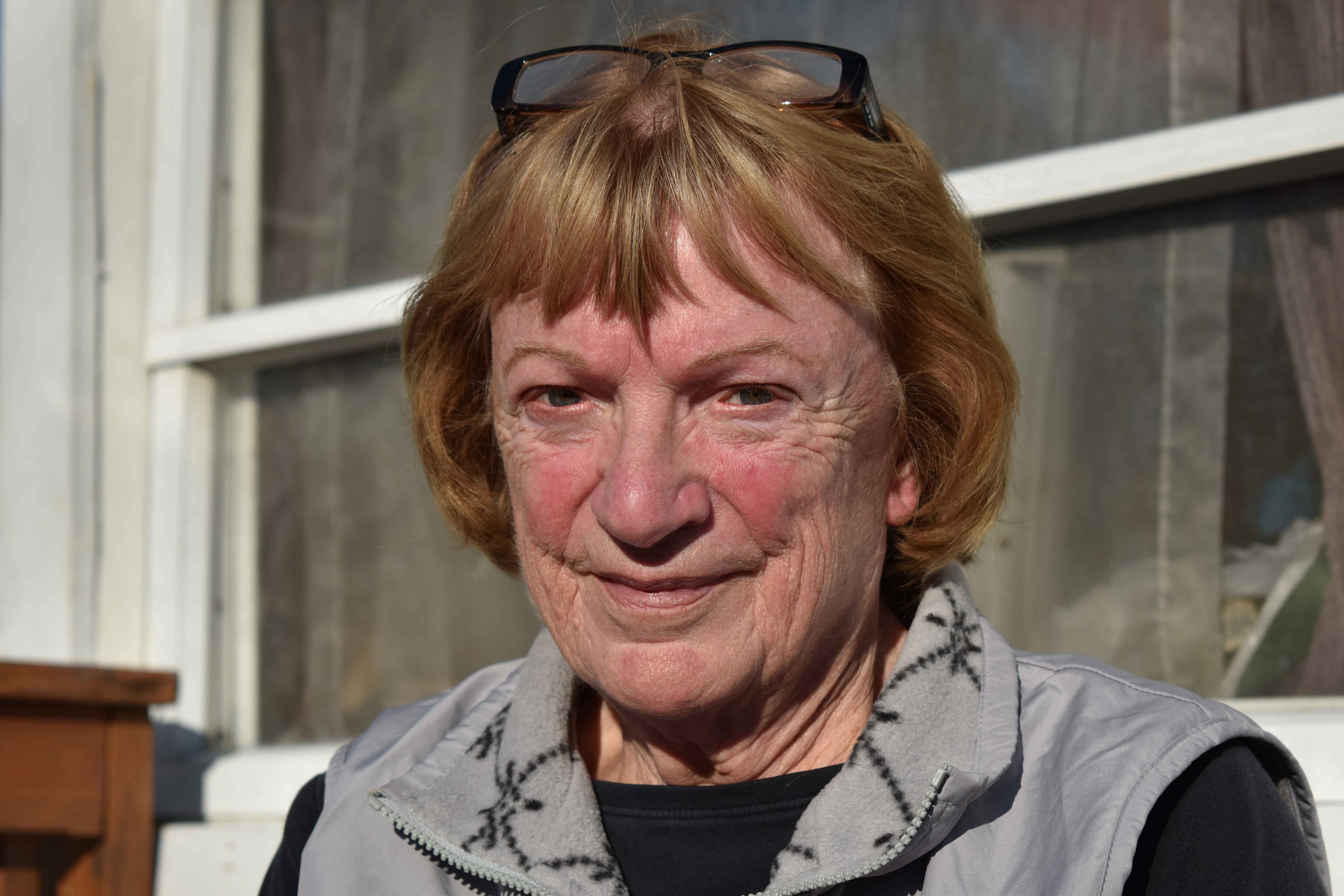
Turner serves meals at Dinner for a Dollar with Batson, but is no stranger to the financial hardships that many of the people she serves experience.
When she graduated high school, she could not afford to go to college. She had three younger sisters.
When she got married and was raising young children, her late husband worked two jobs and she ran state-licensed daycare out of her home for 50 cents an hour, per child, to make ends meet.
In 1981, at age 38, she got her nursing degree. In 1990, at age 47, she opened her cake decorating store, Cakeworks, at the corner of Whitney Avenue and Ives Street. Both ventures were longtime goals, but came at no easy expense.
In 2001, Turner’s husband died. In 2004, Turner and her current partner, John, started their relationship. Until 2014, her income came from a mix of social security and working long hours nursing.
“I did the store all day,” Turner said. “And then I went out after supper and did visiting nurs[ing]. And then weekends, I worked at Arden House [a nursing home]. I did 7 at night to 7 in the morning, every Saturday and Sunday.”
Turner worked hard to make ends meet and keep her business alive, and never took a salary from her business.
“As long as it paid its own bills, it stayed,” Turner said.
Turner closed Cakeworks in July. During COVID-19, she had less hours and less revenue.
During the pandemic, Turner managed to pay half her rent for the store each month. When she couldn’t meet half from her revenue, she had to find other ways of making ends meet.
“We took the rest of it out of the household budget,” Turner said.
The same household budget that paid for bills, utilities, food and car and homeowners’ insurance.
This is the ALICE struggle. Where does limited income go? People must make tough choices to decide how to sustain their livelihoods.
For a family of four (two adults, two children), the income measurements of financial insecurity differ considerably between ALICE and the federal poverty guideline.
According to United Way’s ALICE wage tool, a family of four in New Haven County would need a yearly income of $48,526.40 to survive, while the federal poverty guideline is set at $26,500.

The problem with this disparity is that federal and local low-income services are often based on the federal poverty guidelines. Families earning between $26,500 and $48,526 are underrepresented by federal and local services that don’t consider them poor enough to help.
There are segments of Hamden that struggle and live from paycheck to paycheck, and there are others that barely survive with no income at all.
Hamden’s ALICE and homeless populations are not adequately represented in the census and often do not get the help they need to survive.
A lack of awareness in Hamden contributes to long-term issues of poverty, financial insecurity and homelessness. And for those, like Frank Tompkins, who are living on the streets, things are made worse by what they experience as lack of empathy and community.
“Nobody wants to help anybody,” Tompkins said. “People that got it [money], don’t care about nobody but themself. When you’re out here, you are just trying to survive because it’s all about survival skills.”

